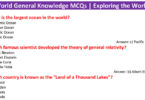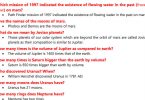WELCOME TO CSS TIMES DAY BY DAY CURRENT AFFAIRS MCQs, YOUR BEST SOURCE FOR UP-TO-DATE AND DAILY...
Daily Dose for Competitive Exams Aspirants
- Daily DAWN News Vocabulary with Urdu Meaning (24 Mar 2024)
- Daily DAWN News Vocabulary with Urdu Meaning (23 Mar 2024)
- Daily DAWN News Vocabulary with Urdu Meaning (22 Mar 2024)
- Daily DAWN News Vocabulary with Urdu Meaning (21 Mar 2024)
- Daily Top-10 Current Affairs MCQs / News (April 15 2024) for CSS
- Daily DAWN News Vocabulary with Urdu Meaning (20 Mar 2024)
- Daily DAWN News Vocabulary with Urdu Meaning (19 Mar 2024)
- Daily DAWN News Vocabulary with Urdu Meaning (18 Mar 2024)
- Daily DAWN News Vocabulary with Urdu Meaning (17 Mar 2024)
- Daily DAWN News Vocabulary with Urdu Meaning (16 Mar 2024)
Latest Articles
Essays Materials
Essay Outline: Electoral Reforms in Pakistan: Necessity and...
Essay Outline: Electoral Reforms in Pakistan: Necessity and Challenges I. Introduction A...
Health for All | Essay Outline for CSS PMS
Essay Outline for CSS PMS Health for All: A Comprehensive Approach to Universal Healthcare I...
Exploring the Economic Potential of BRICS Countries:...
Exploring the Economic Potential of BRICS Countries: Opportunities and Challenges Introduction:...
Art and Morality Essay Outline
Introduction: Art and Morality Essay Outline Art and morality have been intertwined throughout...
Compulsory Subjects Notes
Essay Outline: Electoral Reforms in Pakistan: Necessity and...
Essay Outline: Electoral Reforms in Pakistan: Necessity and Challenges I. Introduction A...
Optional Subjects Notes
Presidential – Constitutional Structure | CSS...
CSS Constitutional Law Notes Presidential – Constitutional Structure Presidential form of...
One Paper Solutions
World General Knowledge MCQs | Exploring the World
MCQs on the Shanghai Cooperation Organisation (SCO)
International Organizations MCQs | General Knowledge MCQs
200+ World General Knowledge MCQs
Random General Knowledge Questions [Set-1]
Important World Geography MCQs
World Organizations MCQs | World General Knowledge MCQs Series
Important Inventions MCQs | World General Knowledge MCQs
Daily Top-20 MCQs for CSS Screening Test, PMS, PCS, FPSC (Set-46)
Daily Top-20 MCQs for CSS Screening Test, PMS, PCS, FPSC (Set-45)
FPSC Updates
CSS Result Competitive Examination (CE) 2022
CSS Result Competitive Examination (CE) 2022 Subject: Announcement of final result – CSS...
CSS Past Papers
FPSC CSS Past Papers 2017 | Download in PDF
FPSC CSS Past CSS Past Papers 2017 (Compulsory Subjects) Essay English (Précis &Composition) GK...
FPSC Past Papers
How to Crack the FPSC FIA Written Test in One Go
How to Crack the FPSC FIA Written Test in One Go Introduction: The FPSC (Federal Public Service...
FPSC Past Papers Solved (3000 MCQs) | Download PDF
This PDF file is compiled by Mr. Hanif Kakar Kibzai We are reuploading complete PDF of FPSC Past...
Appraising / Valuation Officer Federal Board of Revenue (2015)...
FPSC FBR Past Papers Appraising/Valuation Officer Federal Board of Revenue (FBR) Paper 2015 1) Who...
Junior Investigation Officer NAB Past Paper 2012 (NAB Past...
Junior Investigation Officer NAB Past Papers (2012) NAB General Knowledge Paper 2012 For the Posts...



























![Random General Knowledge Questions [Set-1] 28 Random General Knowledge Questions [Set-1]](https://www.csstimes.pk/wp-content/uploads/2023/01/General-Knowledge-Questions-145x100.jpg)























